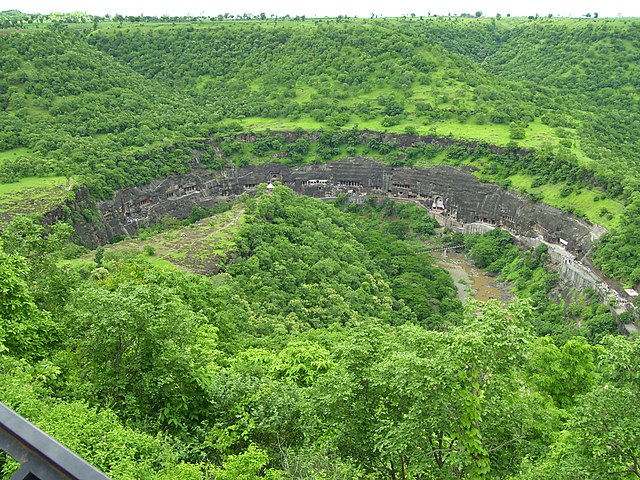Major Robert Gill (1804–1879) was an army officer, antiquarian, painter and photographer in British India. He is best known for his paintings copying the frescoes of the Ajanta Caves. Gill was the first painter – after their rediscovery in 1819 – to make extensive copies of the Buddhist cave paintings, which mostly date to the 5th century CE. His surviving copies and drawings remain significant in Ajanta studies as the originals have significantly deteriorated since his time.
Dancing girl in Ajanta fresco, showing deterioration between the cave now (left) and Gill's copy.
Copy of scene in Cave 1 by Gill, now Victoria and Albert Museum, 2.3 x 2.74 metres.
Photograph by Gill of the interior of Cave 26 at Ajanta from the Allardyce Collection
The Ajanta Caves are 30 rock-cut Buddhist cave monuments dating from the second century BCE to about 480 CE in the Aurangabad district of Maharashtra state in India. Ajanta Caves are a UNESCO World Heritage Site. Universally regarded as masterpieces of Buddhist religious art, the caves include paintings and rock-cut sculptures described as among the finest surviving examples of ancient Indian art, particularly expressive paintings that present emotions through gesture, pose and form.
The Ajanta Caves
Cave 19, Ajanta 5th-century chaitya hall.
Panoramic view of Ajanta Caves from the nearby hill
Cave 9, a first-period Hinayana-style chaitya worship hall with stupa but no idols







